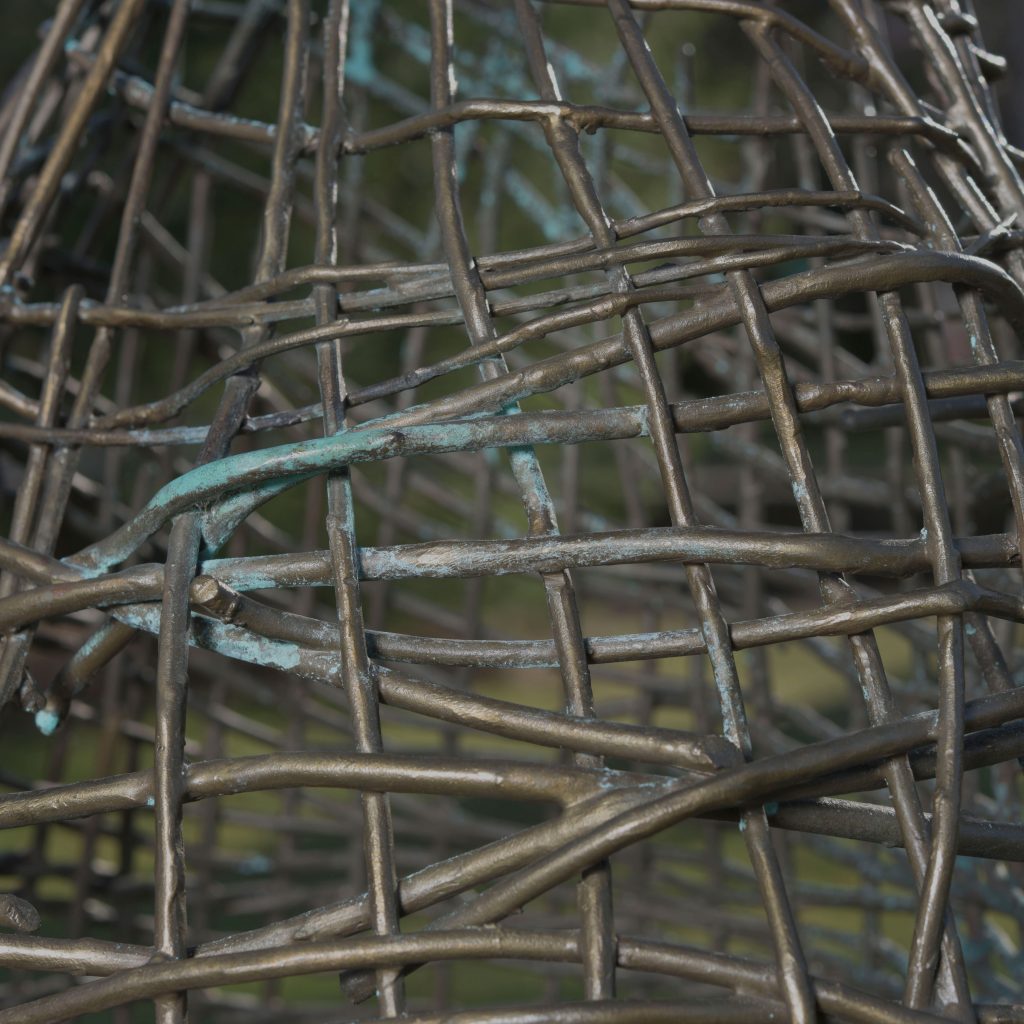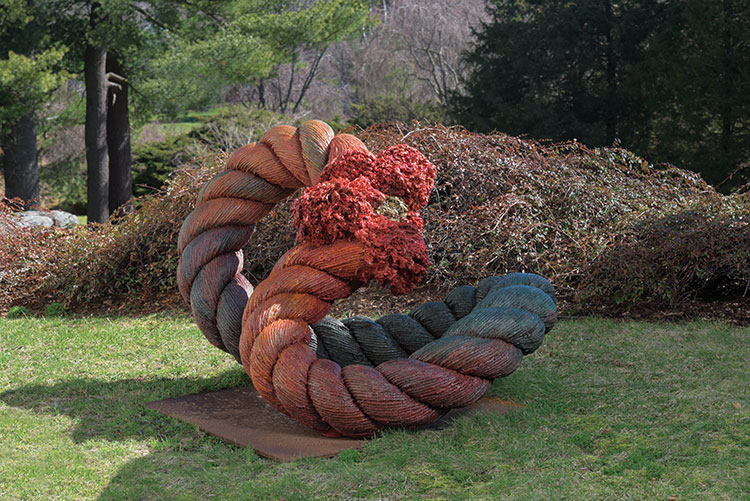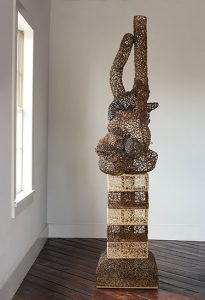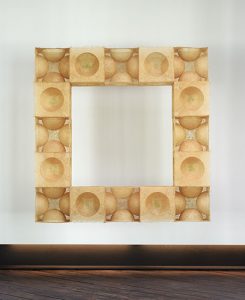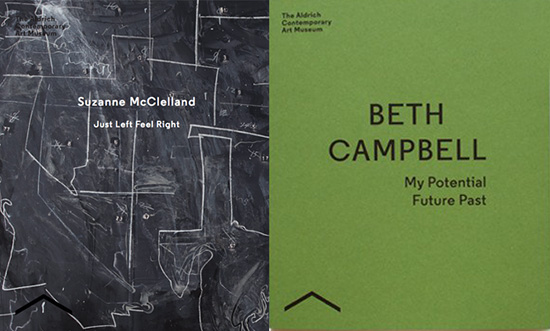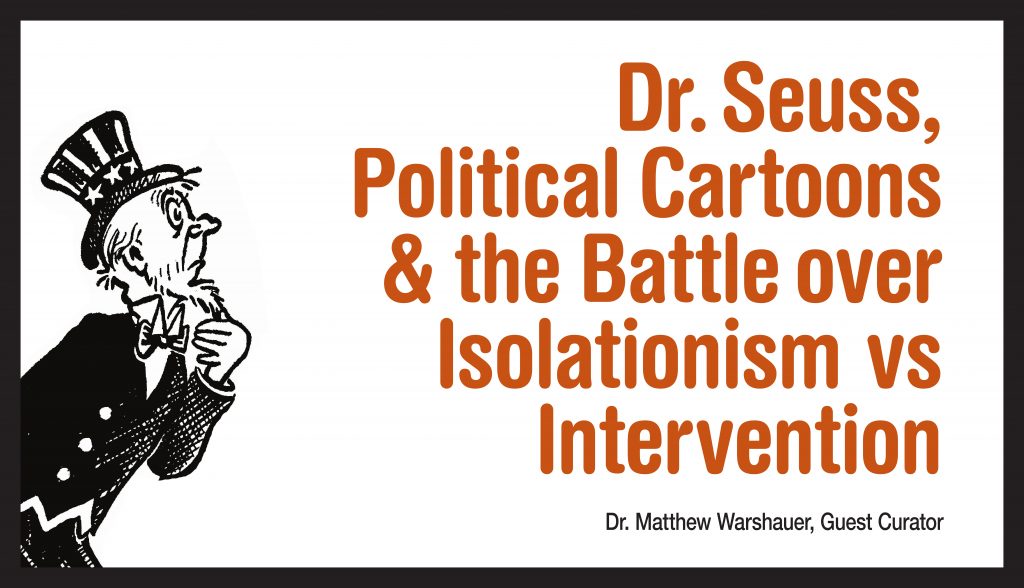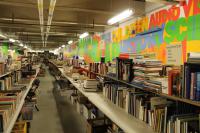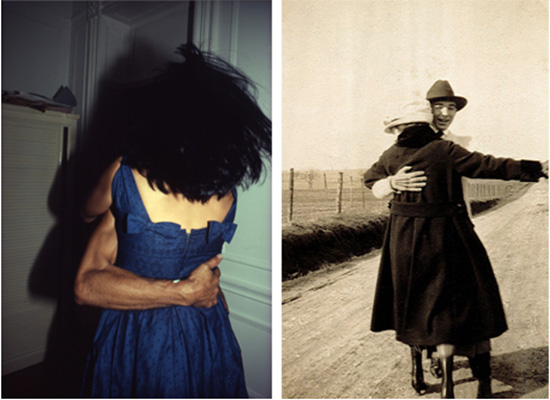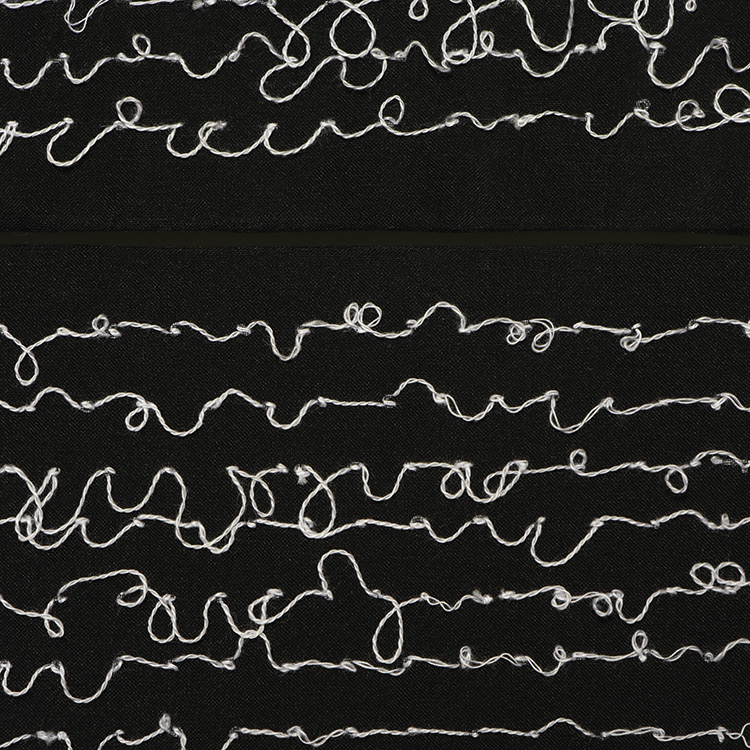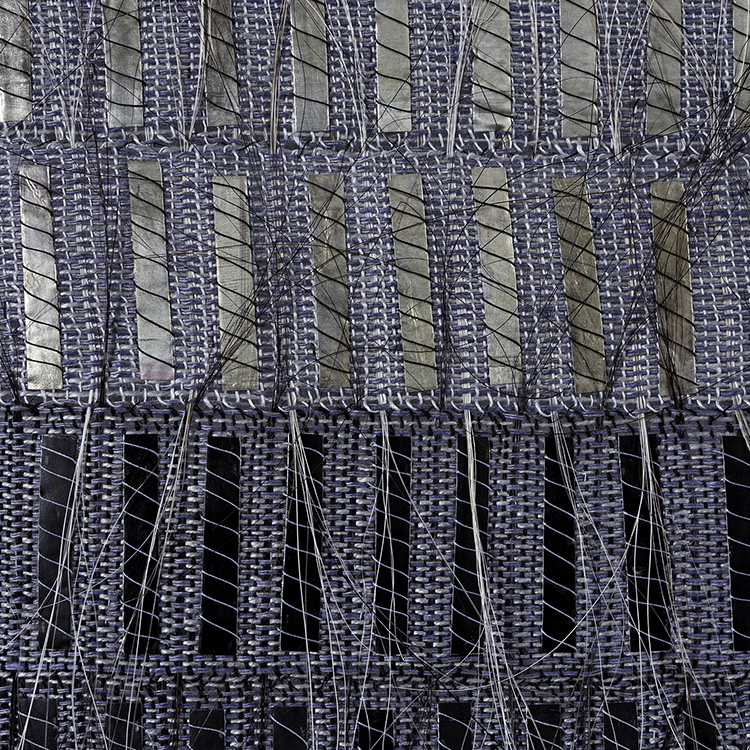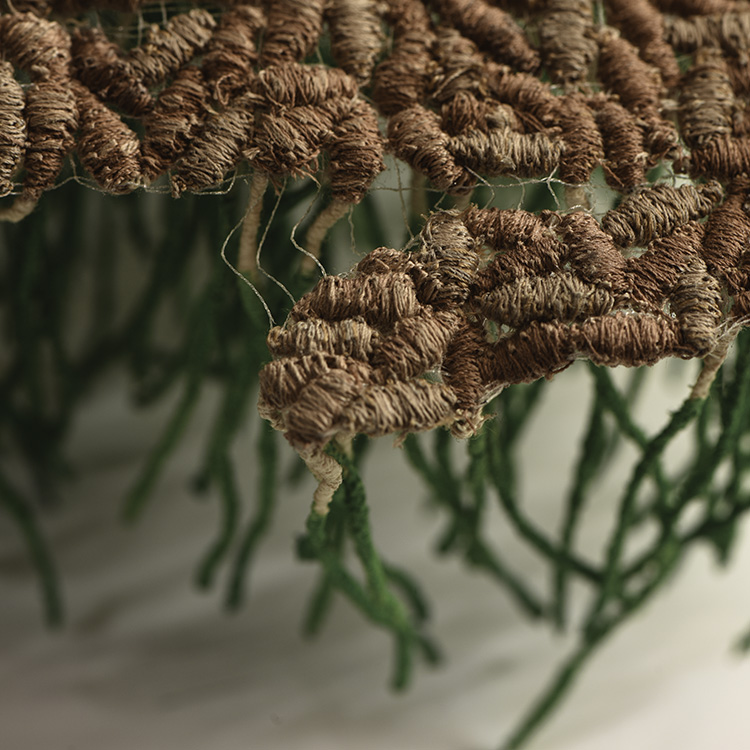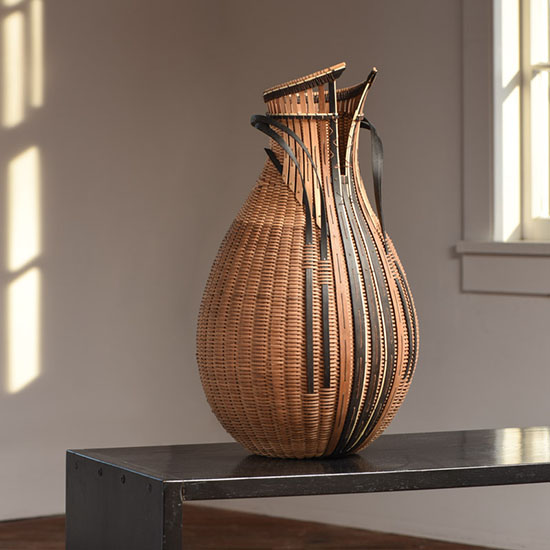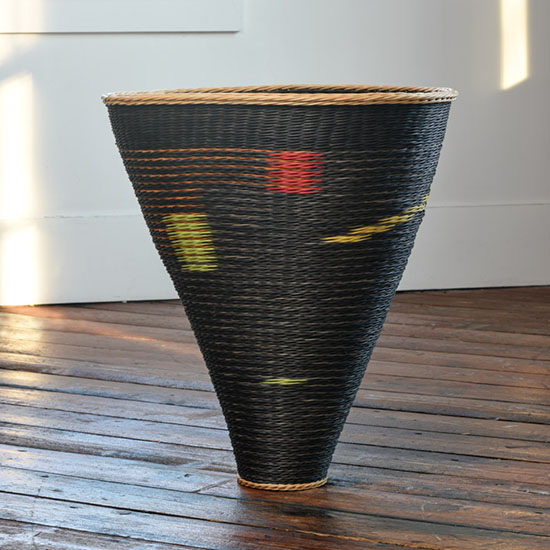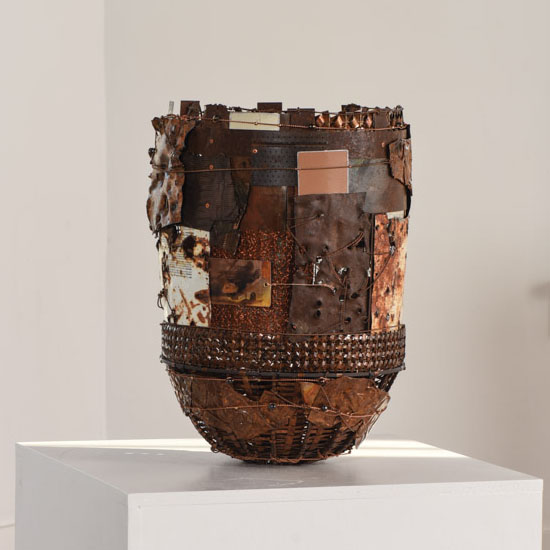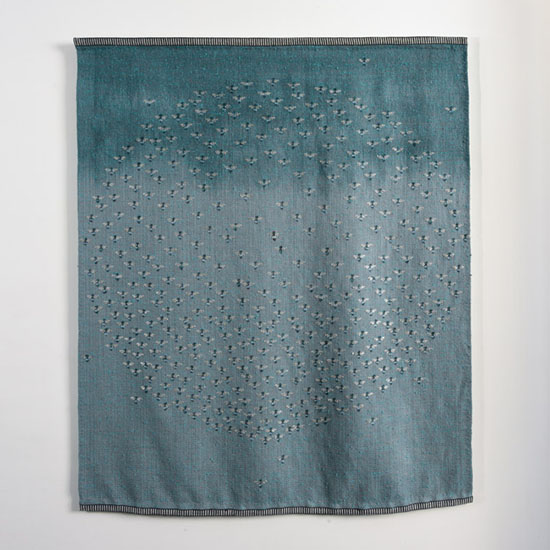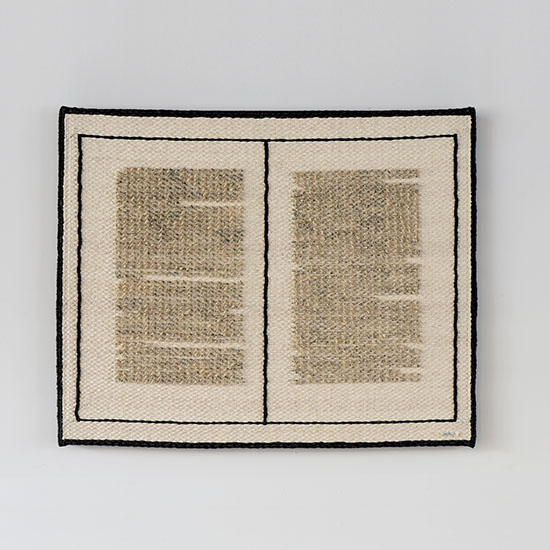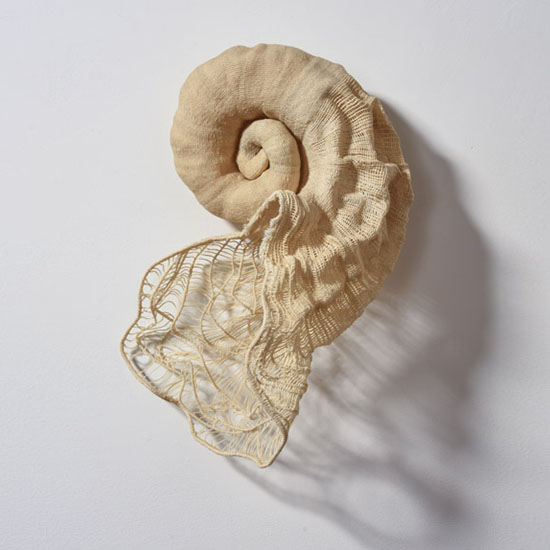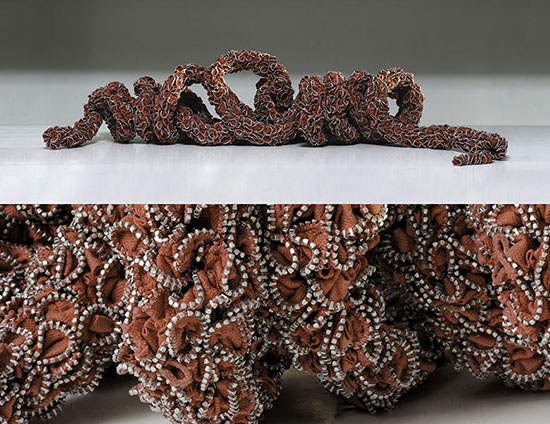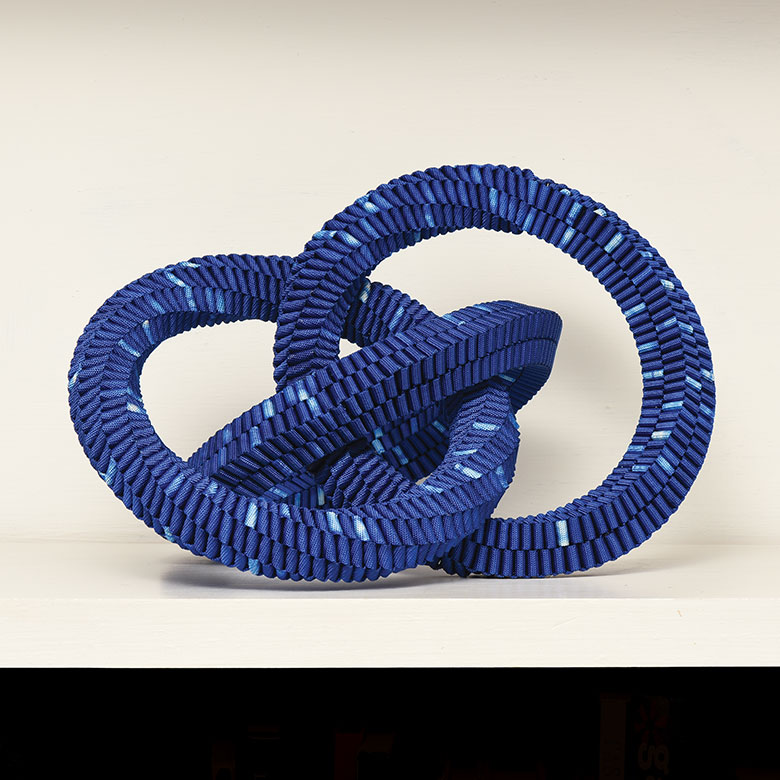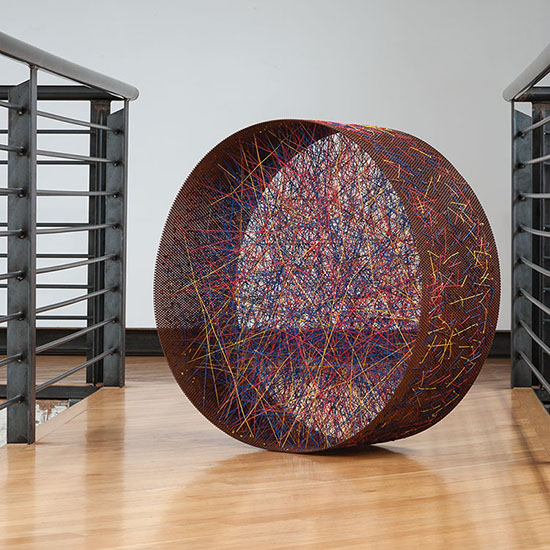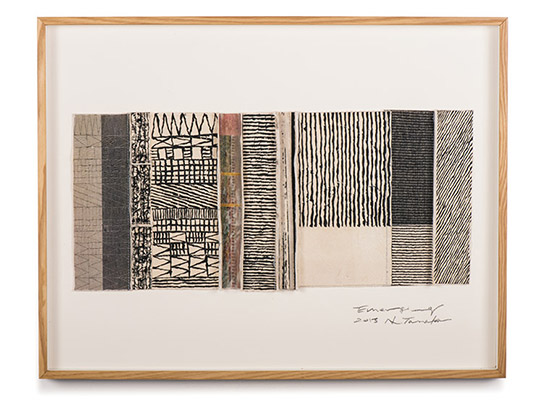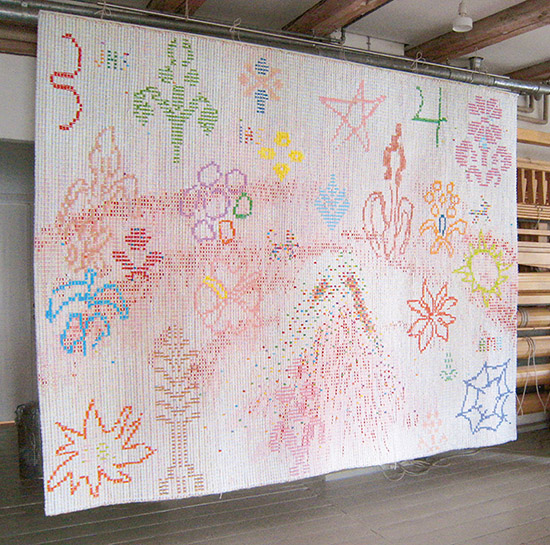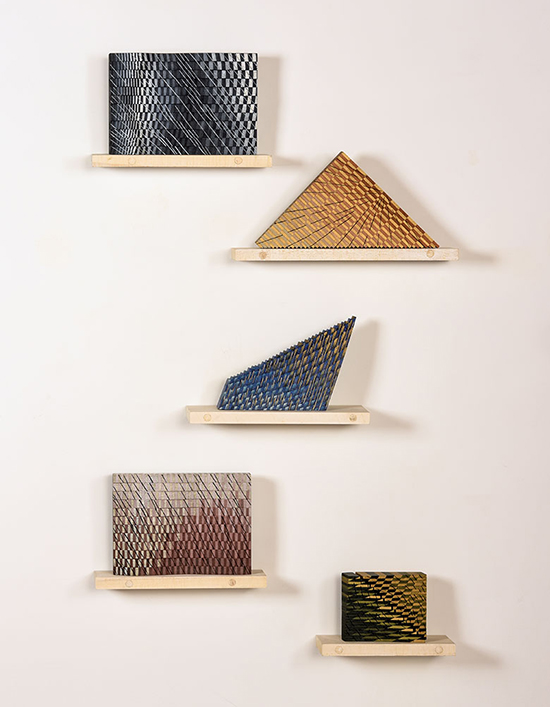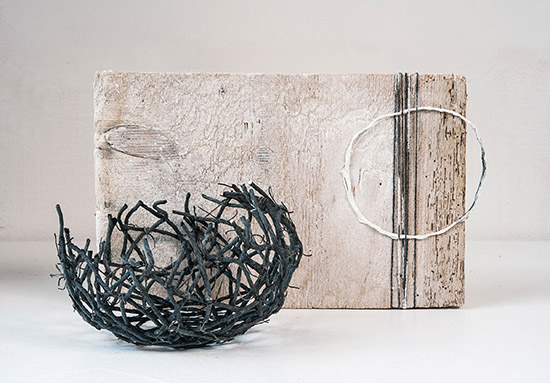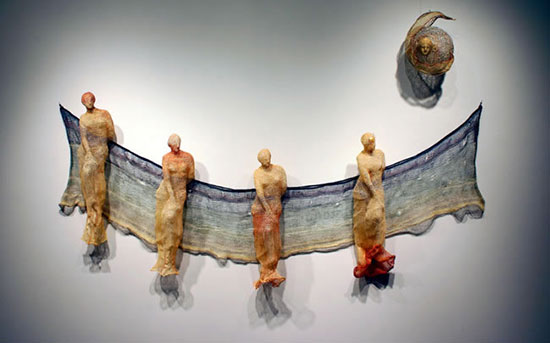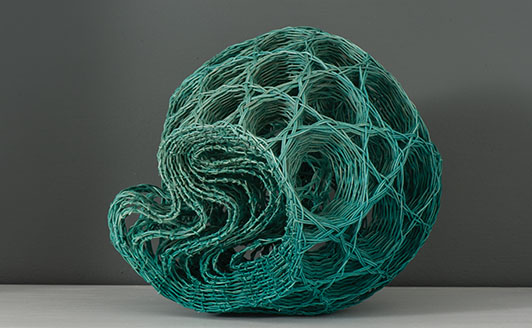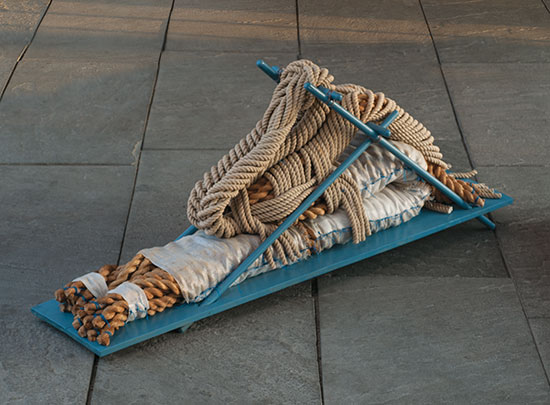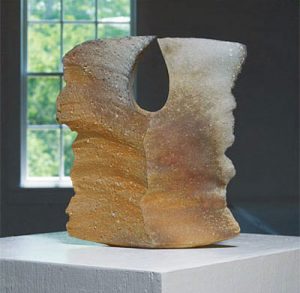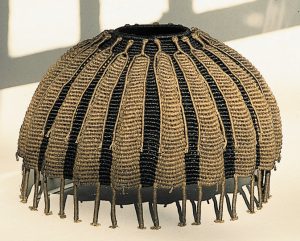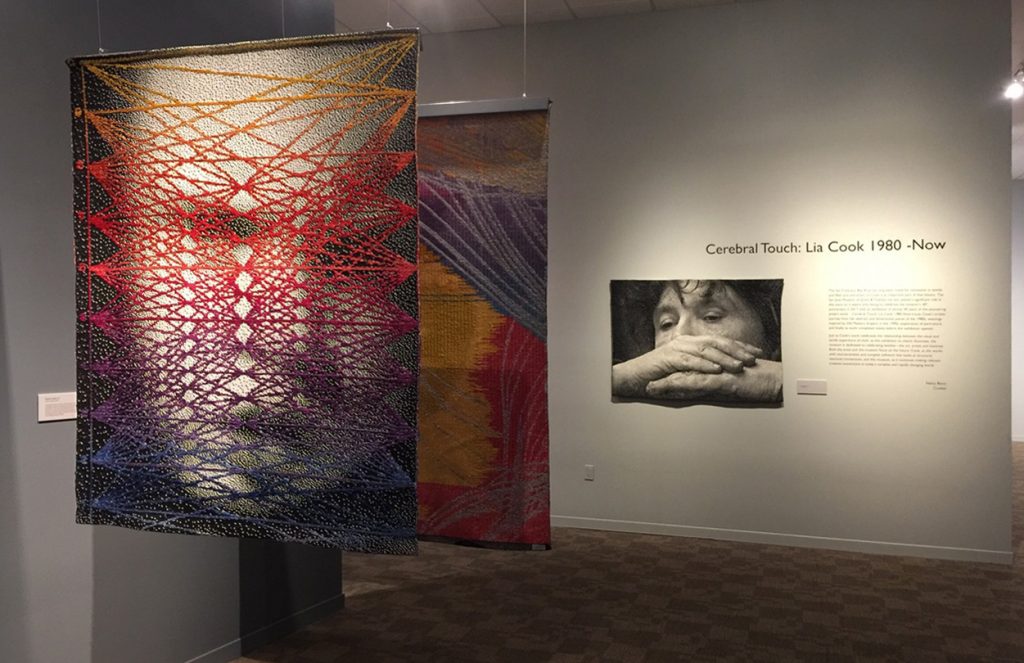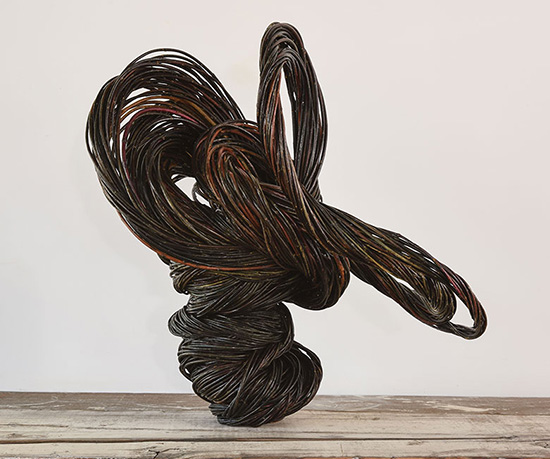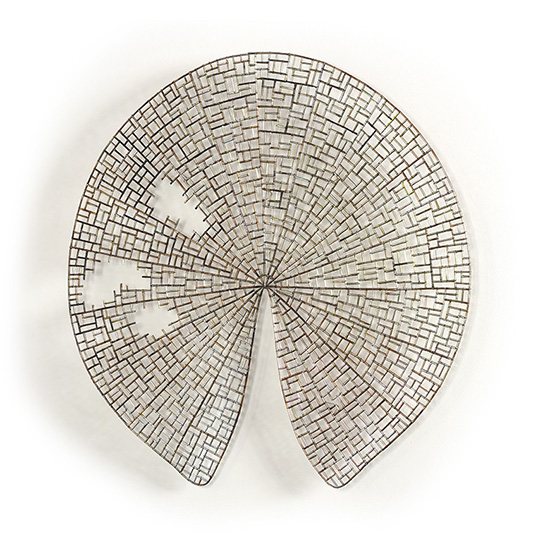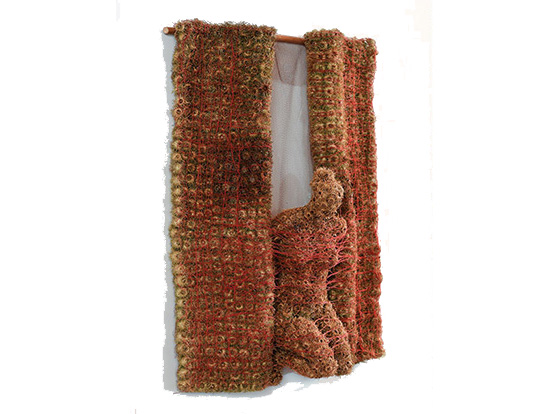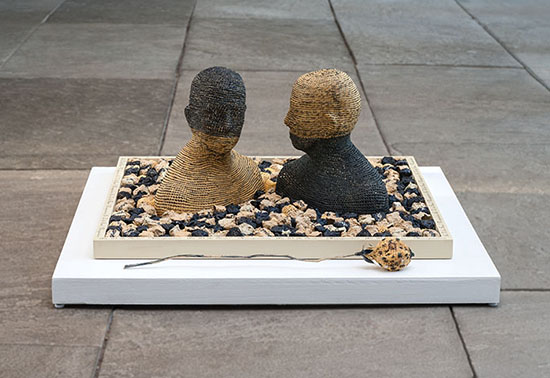For our 30th anniversary exhibition, Still Crazy After All These Years…30 years in art, browngrotta arts will feature outdoor sculptures by two prominent international artists, Dawn MacNutt and Mariyo Yagi.
Dawn MacNutt, a native of the Canadian province Nova Scotia, incorporates an assortment of natural materials, such as twined willow, seagrass and copperwire, into each life-size sculpture. By crafting these column-like figures, MacNutt masterfully captures the beauty and frailty of the human form.
Among MacNutt’s masterpieces is, 2000–2005, a series of figures of willow and seagrass, each standing at 5’8” inches high. As with many of her fiber sculptures, MacNutt’s Return to Delos illustrates the humancondition as a source of imperfections and vulnerabilities but also reveals that, through these flaws, humans connect with one another and thereby create a sense of identity. She achieves this sentiment by leaving her columns purposely unfinished so that bare sticks remain untied and left to reach out to the world surrounding them. browngrotta arts’ exhibition features one of MacNutt’s willow figures cast in bronze, a material used by early imperial cultures. The bronze version is nearly indistinguishable from its willow counterpart, but the bronze permits the installation to withstand outdoor weather conditions.
Mariyo Yagi of Kobe, Japan, uses a combination of rope, bamboo, metal, and even glass to fashion a series of spiraling art installationsthat embody her theory of nawalogy—onenessmade of diversity. Through her art installations, she examines how nawa, the modern Japanese word for “rope,” is not made using one strand but, rather, with a series of strands inthe form of a spiral. Similar to how communication and inter-exchange establisha community, her pieces demonstrate how the energy from spiral structuresimitates the links between heaven and earth, as well as DNA and the universe.
There are also many indoor sculptural works featured in Still Crazy After All These Years, including John McQueen’s stitched twig figure, Askew, and Naoko Serino’s ethereal floating square of jute. Learn more about these and other artists in the browngrotta arts’ 30th anniversary exhibition on our Artists page.


